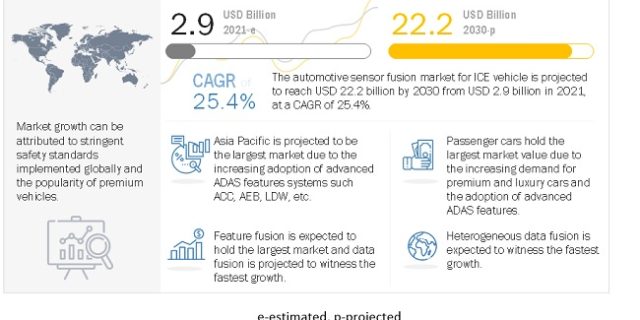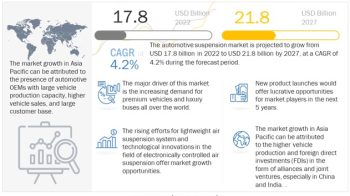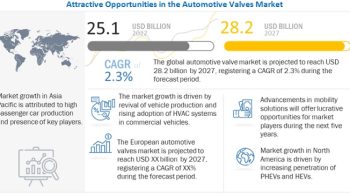
The global Sensor Fusion Market for Automotive for ICE vehicle is estimated to be USD 2.9 billion in 2021 and is projected to reach USD 22.2 billion by 2030, growing at a CAGR of 25.4% from 2021 to 2030. Asia-Pacific is estimated to lead the market during the forecast. Demand of premium and luxury cars globally with enhanced safety and comfort features is expected to boost the demand of the sensor fusion technology. With the rising demand for luxurious vehicles, there has been a substantial increase in the use of technologically advanced ADAS features such as automated emergency braking, adaptive cruise control, lane departure warning. driving the adoption of sensor fusion. Companies such as Robert Bosch (Germany), Denso Corporation (Japan), ZF Friedrichshafen (Germany), Aptiv (Ireland), and NXP Semiconductors N.V. (The Netherlands), STMicroelectronics (Japan), Denso Corporation (Japan) are leading the market.
The rapidly growing automated comfort and safety features in vehicles with advanced ADAS features is the key factor for the growth of sensor fusion for automotive market. Asia Pacific dominating the automotive solenoid industry due to the significant vehicle production volumes in China, India, Japan, and South Korea and demand of premium and luxury vehicles, particularly China. The market penetration of sensor fusion is expected to grow further due to increasing adoption of advanced ADAS features and developments in sensor fusion hardware and software/algorithms. Roll out of various safety standards mandating ADAS features and sensors, is expected to compel automakers to adopt such technology in their vehicle models. For instance, China mandated TPMS in vehicles from 2019. With the implementation of ADAS features, the adoption of sensor fusion is set to increase. The country is also considering mandating automatic emergency braking during the forecast period. Thus, considering the above-mentioned factors, the Sensor Fusion Market for Automotive in China is likely to grow in the coming years.
Download PDF Brochure @ https://www.marketsandmarkets.com/pdfdownloadNew.asp?id=260287840
Passenger cars are estimated to constitute the largest market segment of the global Sensor Fusion Market for Automotive, by vehicle type. The growing demand of premium models from brands such as BMW, Audi, Mercedes-Benz is expected to drive adoption of sensor fusion technology. Also, due to the stringent safety standards, the adoption of advanced ADAS features is on the rise, ensuring the momentum of sensor fusion in the future.
Autonomous vehicles are expected to be a major market for sensor fusion in the coming years with L5 vehicles registering the fastest growth. Autonomous vehicles are touted to be the future of mobility, and intensive R&D is ongoing in the segment. For these vehicles to be a reality, sensor fusion is a prerequisite as these vehicles are equipped with advanced ADAS features. According to MarketsandMarkets analysis, L4 and L5 vehicles are expected to be commercially launched post 2024 and 2028, respectively. Also, automakers such as Audi (Germany), BMW (Germany), Volvo (Sweden), Ford (US), GM (US), etc., are working on developing autonomous driving technologies. This is not only restricted to automakers but also to service providers such as Apple, Aptiv, DiDi, Amazon, Huawei, etc., who are investing in automated driving technology. Thus, continuous ongoing developments are expected to make automated driving technology a reality in the coming years. Some challenges it faces include lack of infrastructure, reliability issues, government regulations, etc.
The Sensor Fusion Market for Automotive is projected to witness significant growth during the forecast period. The growing demand for luxury/premium ICE vehicles, as well as autonomous vehicles and the stringent safety standards implemented globally, are expected to drive market growth. The various market developments, product launches, and collaborations between sensor fusion software developers, hardware suppliers, and OEMs are expected to create lucrative growth opportunities in the sensor fusion ecosystem during the forecast period.
Request Free Sample Report @ https://www.marketsandmarkets.com/requestsampleNew.asp?id=260287840
Key Market Players
The Sensor Fusion Market for Automotive is non-fragmented and dominated by a few global players and several regional players. Some of the key players in the Sensor Fusion Market for Automotive are Robert Bosch GmbH (Germany), ZF Friedrichshafen AG (Germany), Continental AG (Germany), NXP Semiconductors N.V.v (Netherlands), Infineon Technologies (Germany), and Denso Corporation (Japan), Aptiv (Ireland), ST Microelectronics (Japan).
Impact of Covid-19 on Sensor Fusion Market for Automotive
The automotive industry plays a crucial role in building the global economy. However, the COVID-19 outbreak disrupted the entire automotive supply chain on a global scale during the second and third quarters of 2020, impacting new vehicle sales in FY 2020. According to OICA and MarketsandMarkets analysis, vehicle production (including LDV and HDV) witnessed a decline of 19.6% in 2020. The pandemic presented an uncertain recovery timeline for the automotive industry due to lockdowns and shutdown of manufacturing facilities in various parts of the world. The automotive industry faced four major challenges amid COVID-19—limited supply of vehicle parts, reduced sales of new vehicles, the shutdown of production facilities, and a decline in working capital. As the Sensor Fusion Market for Automotive is dependent on the production of vehicles, this market is expected to be impacted due to the outbreak. However, according to various industry experts, the recovery may regain momentum by the second half of 2021.
Speak to Analyst @https://www.marketsandmarkets.com/speaktoanalystNew.asp?id=260287840


